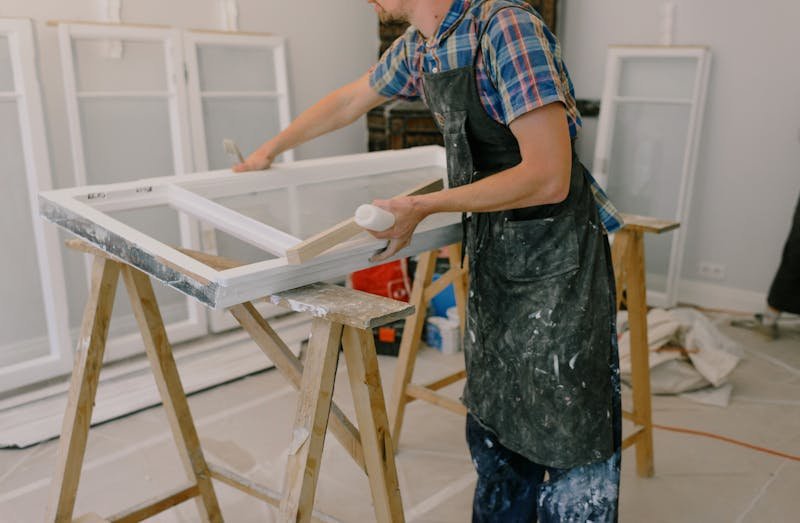When hurricanes strike, the safety of your home and family becomes paramount. One of the most effective ways to safeguard your property against these powerful storms is through hurricane window installation. In this comprehensive guide, we’ll explore how hurricane windows work, their benefits, and why investing in them is a smart decision for homeowners in storm-prone areas.
Understanding Hurricane Windows
Hurricane windows, also known as impact-resistant windows, are specially designed to withstand the severe conditions brought by hurricanes and tropical storms. Unlike standard windows, these are built to resist high winds, flying debris, and other extreme weather conditions. They are made with layers of laminated glass and reinforced frames, making them much more robust and durable.
Key Features of Hurricane Windows
- Laminated Glass: Hurricane windows typically feature a layer of plastic between two layers of glass. This laminate holds the glass together even when it’s shattered, preventing debris from penetrating and maintaining the window’s structural integrity.
- Reinforced Frames: The frames of hurricane windows are made from stronger materials, such as aluminum or vinyl, and are engineered to handle the pressure exerted by strong winds.
- Impact-Resistant Design: The entire construction of hurricane windows is designed to absorb and dissipate energy from impacts, reducing the risk of damage to your home’s interior.
How Hurricane Window Installation Protects Your Home
1. Prevents Wind and Water Intrusion
One of the primary functions of hurricane windows is to prevent wind and water from entering your home. During a hurricane, high winds can push water through gaps in traditional windows, leading to severe flooding and damage to your property. Hurricane windows are sealed tightly and are designed to withstand wind speeds of up to 200 miles per hour, effectively keeping water and debris out of your home.
2. Reduces the Risk of Flying Debris
High winds during a hurricane can propel debris at high speeds, turning them into dangerous projectiles. Ordinary windows are vulnerable to being shattered by flying debris, which can cause significant damage to your home’s interior. Hurricane windows, with their impact-resistant glass, significantly reduce the risk of debris penetrating your home, thereby protecting both your belongings and the structural integrity of your house.
3. Enhances Structural Integrity
Hurricane windows contribute to the overall structural integrity of your home. By reinforcing the window openings, these windows help maintain the building’s envelope, reducing the chances of roof or wall failures that can occur when windows are breached. This enhanced protection is crucial for maintaining the safety and stability of your home during a storm.
4. Improves Energy Efficiency
In addition to their protective qualities, hurricane windows also offer energy efficiency benefits. The laminated glass used in these windows provides excellent insulation, which helps regulate indoor temperatures and reduce energy costs. By minimizing heat transfer, hurricane windows can help keep your home cooler in the summer and warmer in the winter, leading to lower utility bills.
5. Increases Property Value
Installing hurricane windows can increase the value of your property. Homebuyers in storm-prone areas often look for homes with hurricane-resistant features as a measure of safety and durability. By investing in hurricane window installation, you enhance your home’s marketability and appeal, potentially leading to a higher resale value.
The Installation Process
1. Consultation and Assessment
The first step in the hurricane window installation process is a consultation with a professional contractor. They will assess your home’s specific needs, recommend suitable window options, and provide a detailed estimate. This assessment includes evaluating the current window openings, structural requirements, and any additional modifications needed.
2. Selection of Hurricane Windows
Based on the consultation, you will choose hurricane windows that fit your home’s specifications. Factors to consider include the size and type of windows, frame materials, and design preferences. Your contractor will guide you in selecting the best options that meet both aesthetic and functional requirements.
3. Preparation and Installation
Once the windows are selected, preparation work begins. This includes removing existing windows, preparing the openings, and ensuring the structural integrity of the frames. The new hurricane windows are then installed, with attention to proper sealing and alignment. The installation process may vary depending on the complexity of the project and the type of windows chosen.
4. Final Inspection and Testing
After installation, a final inspection is conducted to ensure that the windows are properly installed and functioning as intended. This includes testing the seals, checking for any gaps, and verifying that the windows meet safety standards.
Maintenance and Care
To ensure the longevity and effectiveness of your hurricane windows, regular maintenance is essential. Keep the frames and glass clean and inspect them periodically for any signs of damage or wear. Address any issues promptly to maintain the protective qualities of your windows.
Conclusion
Hurricane window installation is a crucial investment for homeowners in areas prone to severe storms. By providing superior protection against wind, water, and debris, these windows enhance the safety, structural integrity, and energy efficiency of your home. Investing in high-quality hurricane windows can also increase your property’s value and market appeal. For the best results, consult with a reputable contractor who specializes in hurricane window installation, such as the best window and door company, to ensure that you receive top-notch products and professional service.
